Abstract
1 All five rats in a group survived if dimercaptosuccinic acid (DMSA), a water soluble derivative of 2,3-dimercaptopropanol (BAL), was given in doses of 10-40 mg/kg intraperitoneally 30 min, 4 and 24 h after administration of 2.4 mg/kg Hg as HgCl2, whereas three out of a group of five died if DMSA was not given. DMSA 20 mg/kg increased urinary excretion and decreased the body burden significantly more than 10 mg/kg DMSA, but further doubling of the dose had only marginal effects. 2 DMSA was able to reduce body burden and increase urinary excretion of Hg when intraperitoneal treatment started eight days after the subcutaneous administration of HgCl2. 3 DMSA was effective in decreasing body burden and the brain concentration of Hg in rats dosed orally with methylmercury (MeHgCl) when intraperitoneal treatment started with 40 mg/kg DMSA 24 h after Hg. Increase in the urinary excretion of mercury was responsible for the decrease in body burden. 4 DMSA was effective when given in the drinking water of rats or mice both against inorganic Hg and MeHgCl. In mice treated intraperitoneally with MeHgCl, DMSA 19.5 mug/ml in the drinking water caused a significant decrease in the body burden and increase in the excretion of Hg. 5 DMSA was about four times more efficient than D-penicillamine in decreasing the body burden of Hg. As their toxicity is in the same range, the higher efficiency of DMSA offers a larger margin of safety for the mobilization of Hg.
Full text
PDF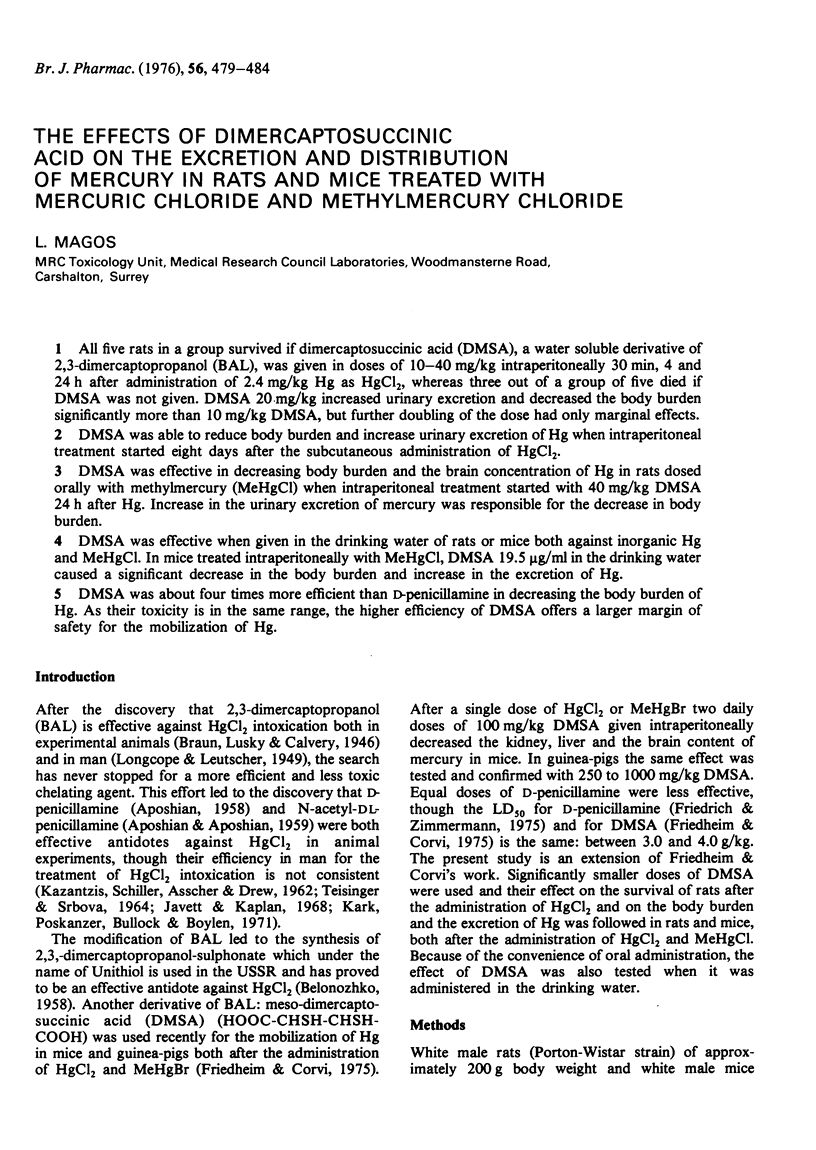
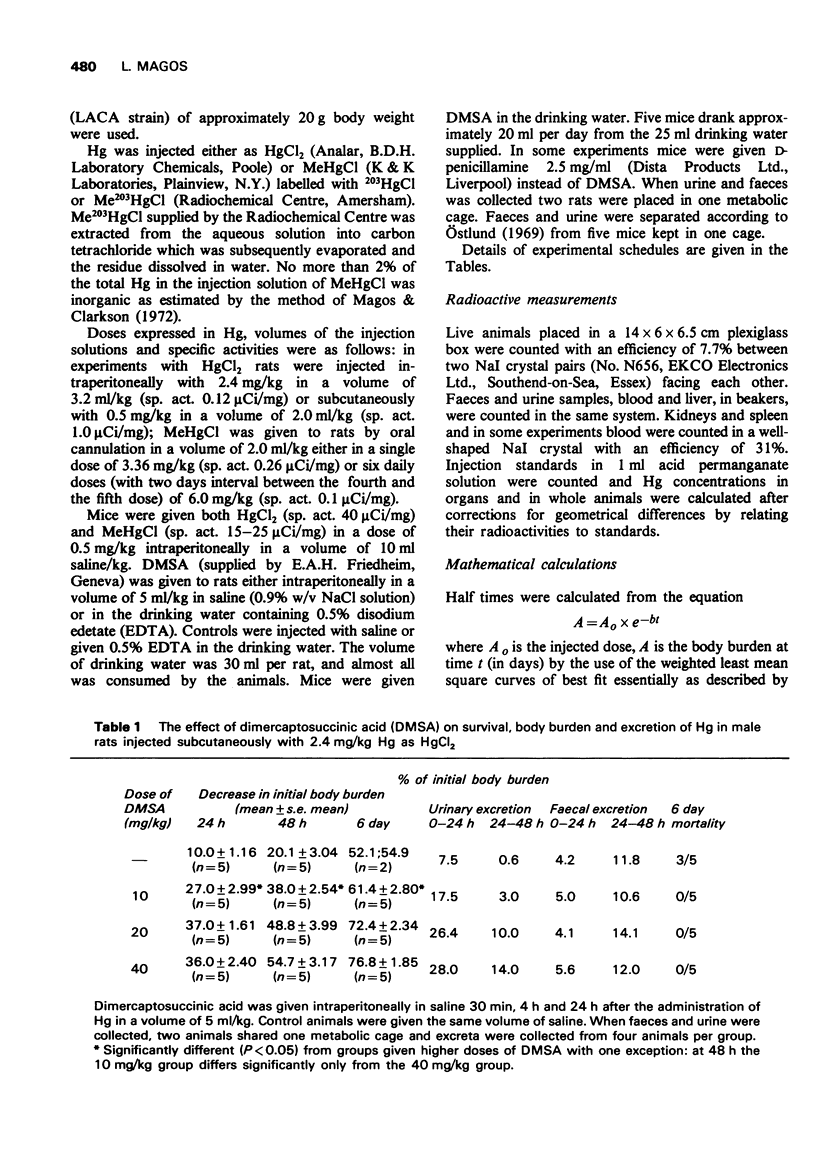
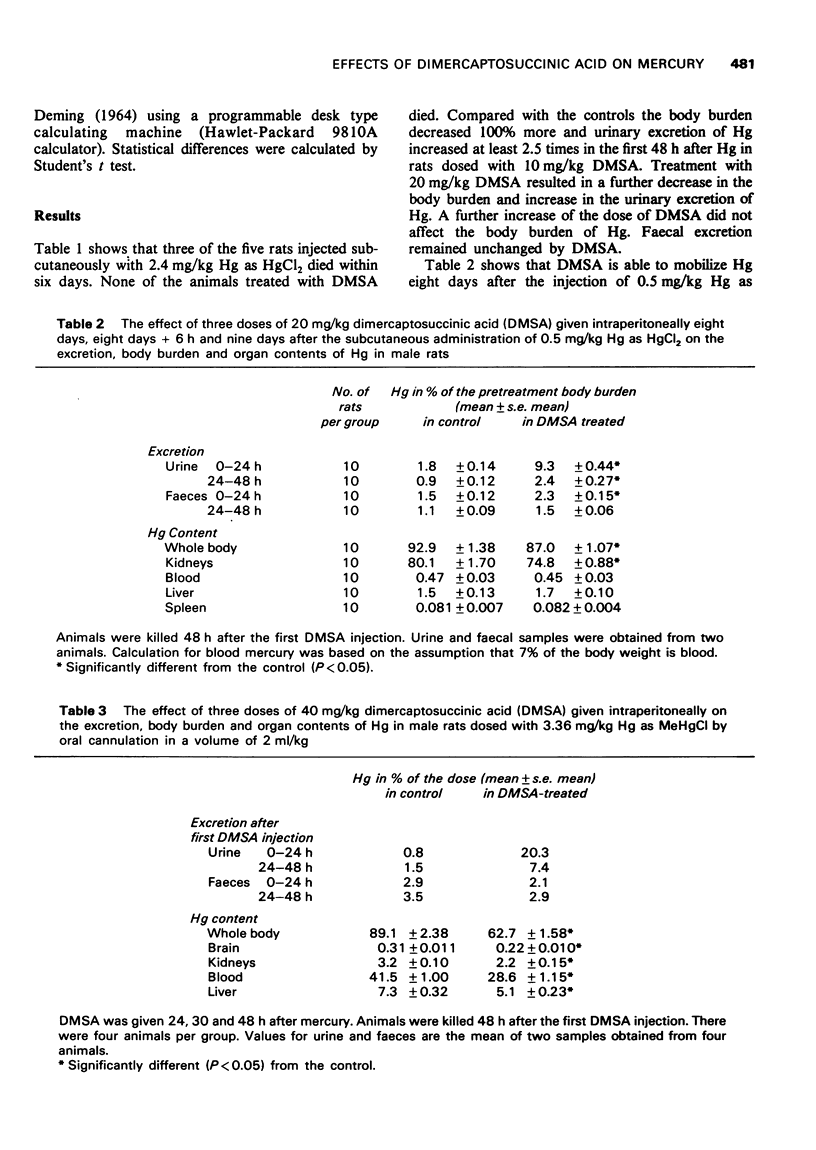
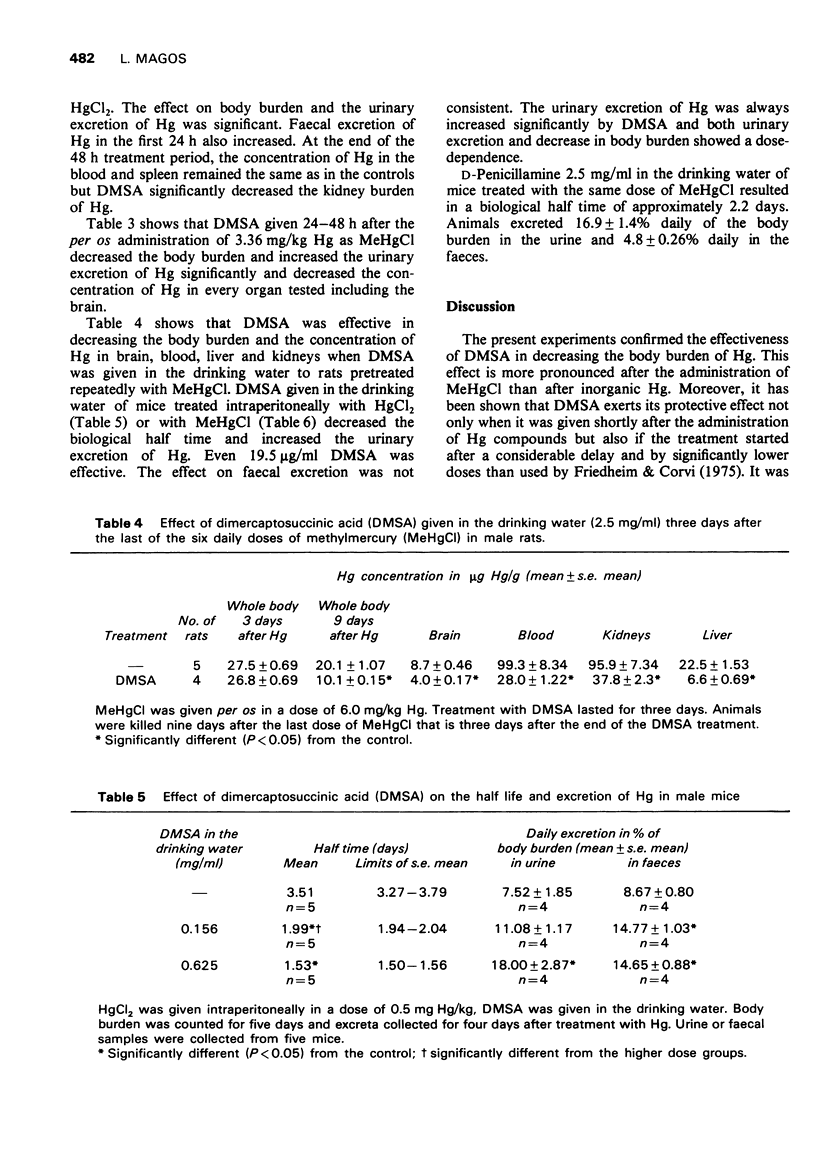
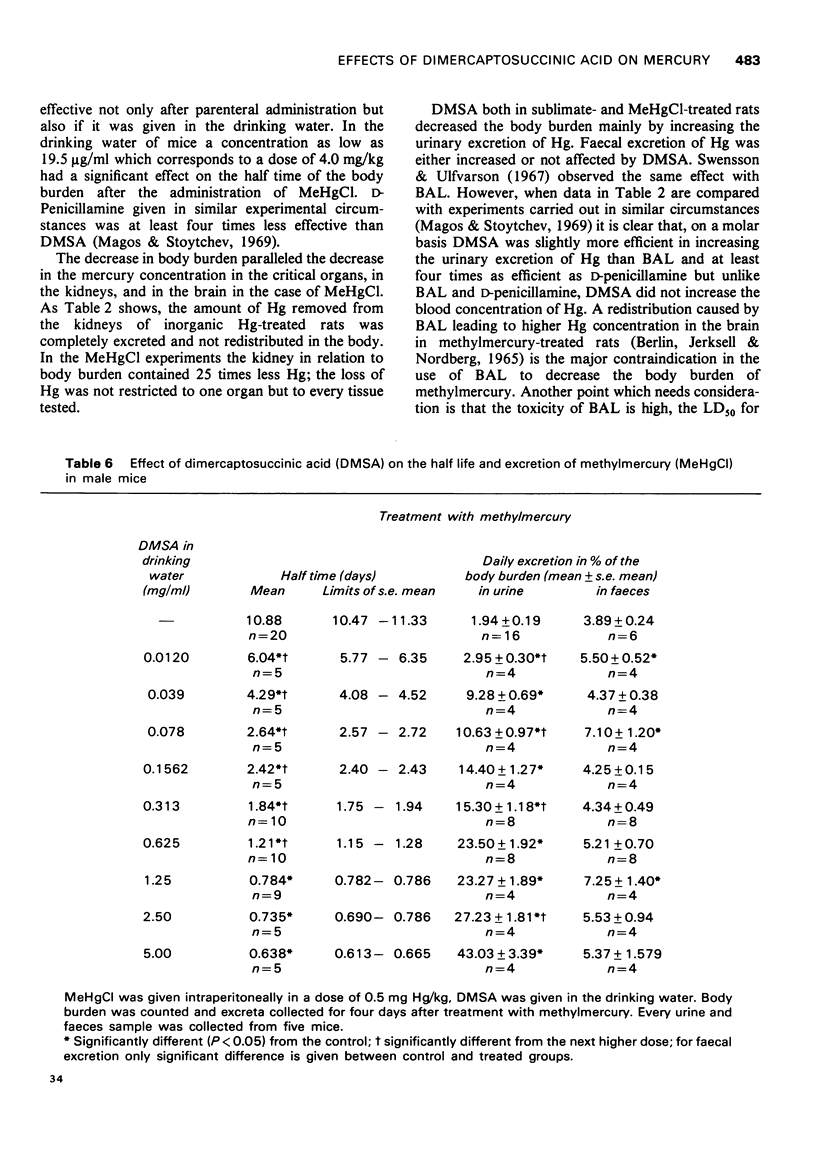

Selected References
These references are in PubMed. This may not be the complete list of references from this article.
- APOSHIAN H. V., APOSHIAN M. M. N-acetyl-DL-penicillamine, a new oral protective agent against the lethal effects of mercuric chloride. J Pharmacol Exp Ther. 1959 Jun;126(2):131–135. [PubMed] [Google Scholar]
- APOSHIAN H. V. Protection by D-penicillamine against the lethal effects of mercuric chloride. Science. 1958 Jul 11;128(3315):93–93. doi: 10.1126/science.128.3315.93. [DOI] [PubMed] [Google Scholar]
- Berlin M., Jerksell L. G., Nordberg G. Accelerated uptake of mercury by brain caused by 2,3-dimercaptopropanol (BAL) after injection into the mouse of a methylmercuric compound. Acta Pharmacol Toxicol (Copenh) 1965;23(4):312–320. doi: 10.1111/j.1600-0773.1965.tb00356.x. [DOI] [PubMed] [Google Scholar]
- Friedheim E., Corvi C. Meso-dimercaptosuccinic acid, a chelating agent for the treatment of mercury poisoning. J Pharm Pharmacol. 1975 Aug;27(8):624–626. doi: 10.1111/j.2042-7158.1975.tb09522.x. [DOI] [PubMed] [Google Scholar]
- Friedrich L., Zimmermann F. Zur Pharmakologie von D-Penicillamin. Arzneimittelforschung. 1975 Feb;25(2):162–168. [PubMed] [Google Scholar]
- Javett S. N., Kaplan B. Acrodynia treated with D-penicillamine. Am J Dis Child. 1968 Jan;115(1):71–73. doi: 10.1001/archpedi.1968.02100010073014. [DOI] [PubMed] [Google Scholar]
- KAZANTZIS G., SCHILLER K. F., ASSCHER A. W., DREW R. G. Albuminuria and the nephrotic syndrome following exposure to mercury and its compounds. Q J Med. 1962 Oct;31:403–418. [PubMed] [Google Scholar]
- Kark R. A., Poskanzer D. C., Bullock J. D., Boylen G. Mercury poisoning and its treatment with N-acetyl-D,L-penicillamine. N Engl J Med. 1971 Jul 1;285(1):10–16. doi: 10.1056/NEJM197107012850102. [DOI] [PubMed] [Google Scholar]
- LONGCOPE W. T., LUETSCHER J. A., Jr The use of BAL in the treatment of the injurious effects of arsenic, mercury and other metallic poisons. Ann Intern Med. 1949 Oct;31(4):545–554. doi: 10.7326/0003-4819-31-4-545. [DOI] [PubMed] [Google Scholar]
- Magos L., Clarkson T. W. Atomic absorption determination of total, inorganic, and organic mercury in blood. J Assoc Off Anal Chem. 1972 Sep;55(5):966–971. [PubMed] [Google Scholar]
- Magos L., Stoytchev T. Combined effect of sodium maleate and some thiol compounds on mercury excretion and redistribution in rats. Br J Pharmacol. 1969 Jan;35(1):121–126. doi: 10.1111/j.1476-5381.1969.tb07972.x. [DOI] [PMC free article] [PubMed] [Google Scholar]
- Swensson A., Ulfvarson U. Experiments with different antidotes in acute poisoning by different mercury compounds. Effects on survival and on distrinution and excretion of mercury. Int Arch Arbeitsmed. 1967;24(1):12–50. doi: 10.1007/BF01014660. [DOI] [PubMed] [Google Scholar]
- TEISINGER J., SRBOVA J. VLIV D-PENICILAMINU NA VYLU COV'AN'I RTUTI A OLOVA V MO CI. Prac Lek. 1964 Dec;16:433–435. [PubMed] [Google Scholar]


